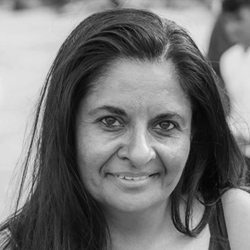Foster’s DNA etched in Riyadh master plan
The next phase of the design for King Salman International Airport will bear the signature of Foster + Partners. The British architecture firm has been tasked with creating Riyadh’s airport master plan.

Riyadh's King Salman International Airport: It is expected to become the world's largest airport. IMAGE: Foster + Partners
When complete, King Salman International Airport is expected to be one of the world’s largest airports covering an area of around 57 km², providing six parallel runways, several terminals, airport support services, residential and recreational facilities, and retail outlets.
With sustainability at its core, the new airport will achieve LEED platinum certification by incorporating cutting-edge green initiatives into its design and will be powered by renewable energy.
The airport aims to accommodate up to 100 million travellers by 2030, and up to 185 million passengers, with the capacity to process 3.5 million tons of cargo by 2050.
Prince Mohammed bin Salman bin Abdulaziz, prime minister and chairman of the Council of Economic and Development Affairs (CEDA) and chairman of the Public Investment Fund (PIF), says that this project will boost “Riyadh’s position as a global logistics hub, stimulate transport, trade and tourism, and act as a bridge linking the East with the West.”
The airport project is in line with Saudi Arabia’s vision to make Riyadh one of the top 10 city economies in the world and to support the growth of its population to 15–20 million inhabitants by 2030.
King Salman International Airport will thus be transformed into an ‘aerotropolis’ offering a seamless customer journey, world-class efficient operations, and innovation. Blending tradition and modernity, the design of this transportation hub will delicately array Riyadh’s identity and the Saudi culture “to ensure a unique travel experience for visitors and transit travellers”.
This ambitious project is part of PIF’s strategy to unleash the capabilities of promising sectors and diversify Saudi Arabia’s economy. It also matches the national transport strategy and the global supply chain resilience initiative.
The new airport is expected to contribute 27 billion Saudi riyals annually to non-oil GDP and to create 103,000 direct and indirect jobs, in accordance with the goals set by the Kingdom’s Vision 2030.
Stay up to date
Subscribe to the free Times Aerospace newsletter and receive the latest content every week. We'll never share your email address.

